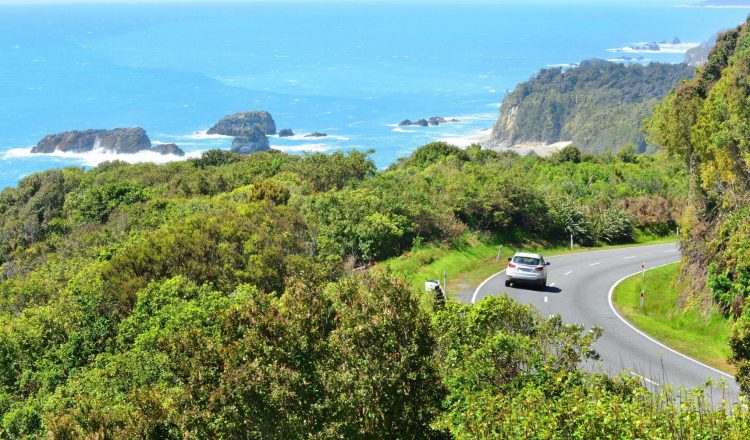Tốc độ
Vấn đề an toàn đường bộ lớn nhất ở New Zealand hiện nay là tốc độ — tài xế di chuyển quá nhanh so với điều kiện.
Tốc độ ảnh hưởng đến tất cả các sự cố. Nó có thể là một yếu tố gây ra chúng và nó có ảnh hưởng trực tiếp đến thiệt hại xảy ra trong một vụ va chạm. Rõ ràng là từ các số liệu thống kê về vụ tai nạn, nhiều người đánh giá thấp việc thay đổi điều kiện, chẳng hạn như thời tiết ẩm ướt, có thể làm tăng rủi ro trên đường như thế nào.
Lái xe an toàn trong giới hạn tốc độ
Nhiều người lái xe không biết rằng họ có thể đang đi ở tốc độ giới hạn mà vẫn lái xe không an toàn. Giới hạn tốc độ là tốc độ hợp pháp tối đa mà bạn có thể đi trên một con đường trong điều kiện hoàn hảo. Tuy nhiên, điều kiện đường xá hiếm khi hoàn hảo. Là một người lái xe an toàn, bạn sẽ phải để ý những thay đổi về giao thông, đường xá và điều kiện thời tiết, đồng thời giảm tốc độ cho phù hợp.
Điều chỉnh tốc độ của bạn theo các điều kiện
Điều kiện giao thông mà bạn có thể cần để giảm tốc độ của bạn bao gồm:
- Khối lượng giao thông trên đường
- Người đi bộ, chạy bộ và người đi xe đạp
- Thời gian nghỉ lễ khi có rất nhiều du khách trên đường
- ô tô đậu.
Điều kiện đường
Điều kiện đường bộ bạn nên giảm tốc độ của bạn bao gồm:
- các khu vực gập ghềnh hoặc hẹp trên đường
- bề mặt đường ướt, băng giá hoặc sỏi
- dấu hiệu cảnh báo các mối nguy hiểm như đường cong sắc nét hoặc bề mặt trơn trượt.
Điều kiện thời tiết
Điều kiện thời tiết bạn nên giảm tốc độ của bạn bao gồm:
- mưa, tuyết và băng
- gió
- sương mù
- ánh sáng mặt trời.
Tốc độ ảnh hưởng đến an toàn đường bộ như thế nào?
Bạn lái xe càng nhanh, bạn càng có nhiều khả năng bị tai nạn. Khi tốc độ của bạn tăng lên:- khoảng cách bạn cần để dừng tăng
- có một xác suất lớn hơn rằng bạn sẽ đi quá nhanh nếu bạn gặp một sự thay đổi bất ngờ trong điều kiện đường
- có một cơ hội lớn hơn mà những người sử dụng đường khác sẽ đánh giá sai bạn đang đi nhanh như thế nào.
Mức độ nghiêm trọng của thương tích do tai nạn có liên quan trực tiếp đến tốc độ va đập của xe — có hay không tăng tốc là một yếu tố trong vụ tai nạn.
Điều gì xảy ra khi một chiếc xe đang chạy quá tốc độ đâm vào?
Khi một chiếc xe gặp sự cố, nó sẽ trải qua một sự thay đổi tốc độ nhanh chóng. Tuy nhiên, những người ngồi trong xe tiếp tục di chuyển với tốc độ trước đó của xe cho đến khi họ dừng lại – do va vào vật thể hoặc bị hạn chế bởi dây an toàn hoặc túi khí.
Cơ thể con người không được thiết kế để chống lại các vật thể với tốc độ nhanh, và tốc độ càng nhanh thì thương tích càng nặng.
Rủi ro đối với người đi bộ
Nếu người đi bộ bị xe đâm, mức độ nghiêm trọng của thương tích liên quan đến tốc độ va chạm. Xác suất tử vong của một người đi bộ tăng lên khi tốc độ va chạm tăng lên, nó tăng khoảng gấp đôi trong khoảng từ 30km / h đến 40km / h và lại tăng gấp đôi từ 40km / h lên 50km / h. Nguy cơ đối với những người đi bộ dễ bị tổn thương, chẳng hạn như người già và trẻ nhỏ, thậm chí còn cao hơn.
Một số thông tin về camera bắn tốc độ
Số vụ tai nạn về cơ bản giảm đáng kể khi sử dụng camera bắn tốc độ. Một nghiên cứu về dữ liệu tai nạn trong 20 tháng sau khi camera bắn tốc độ ra đời ở New Zealand vào năm 1993 cho thấy giảm 23% số vụ tai nạn nghiêm trọng và gây tử vong tại các điểm đặt camera bắn tốc độ ở đô thị và giảm 11% số vụ tai nạn nghiêm trọng và chết người tại các điểm đặt camera bắn tốc độ ở nông thôn. .
Kinh nghiệm quốc tế cho thấy camera bắn tốc độ là một công cụ quản lý tốc độ có hiệu quả kinh tế cao. Điều này có nghĩa là họ tiết kiệm được rất nhiều sinh mạng cho chi phí đặt chúng vào vị trí và vận hành chúng.
Các camera bắn tốc độ được đặt trên những đoạn đường có nhiều va chạm liên quan đến tốc độ. Cảnh sát tham khảo ý kiến của các hội đồng, Cơ quan Giao thông vận tải NZ và AA địa phương khi quyết định vị trí đặt camera bắn tốc độ.

















































